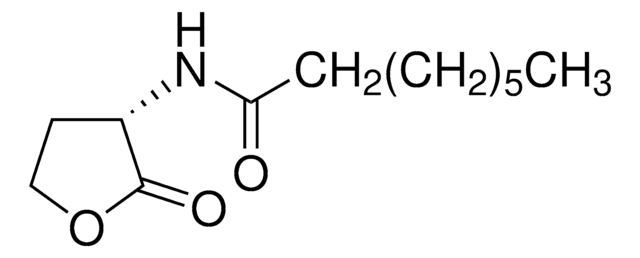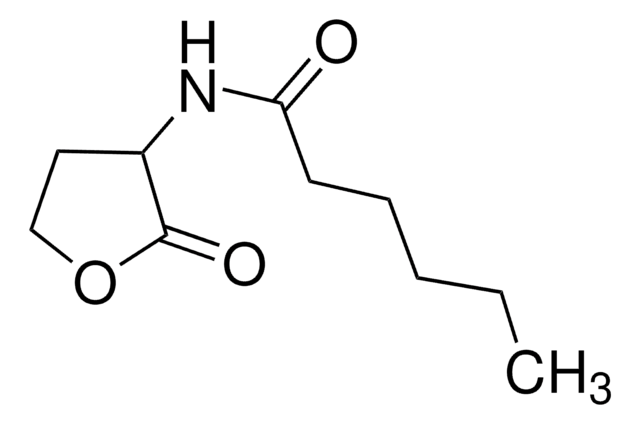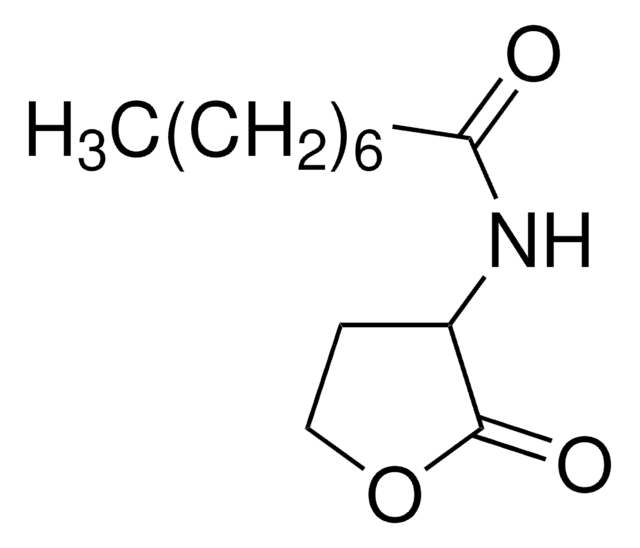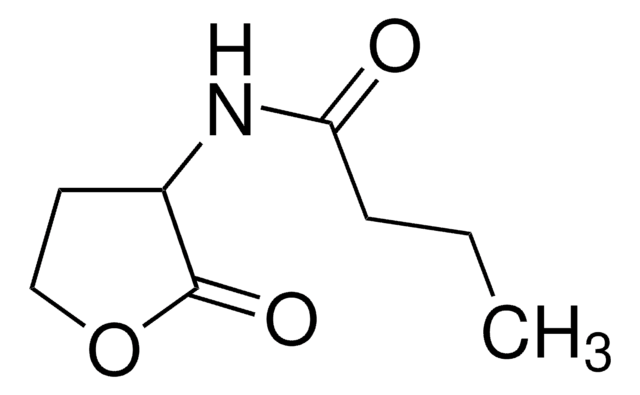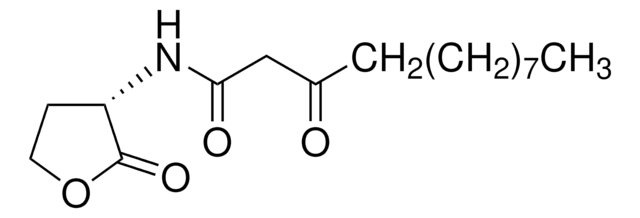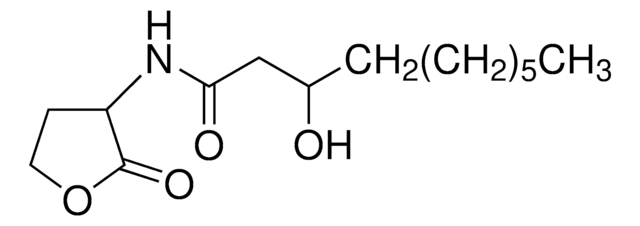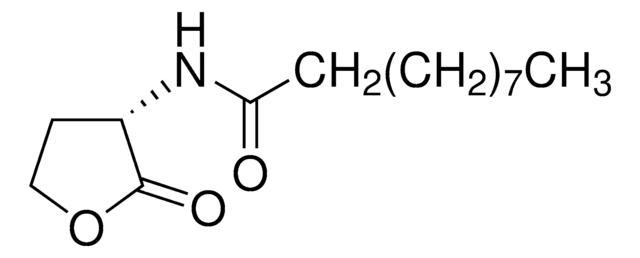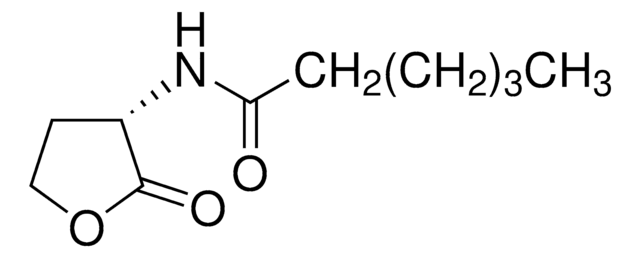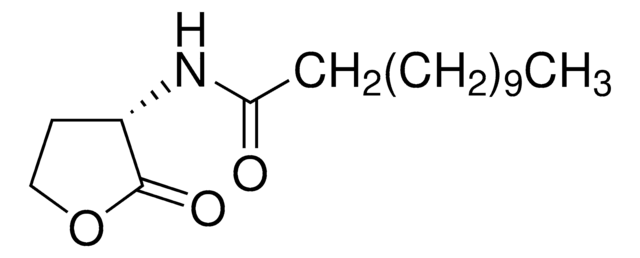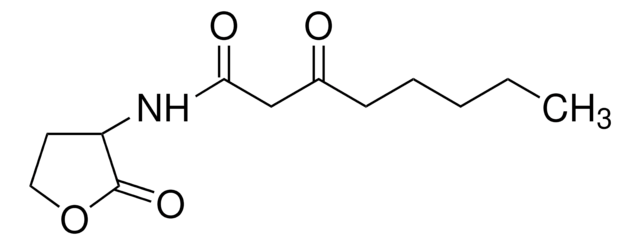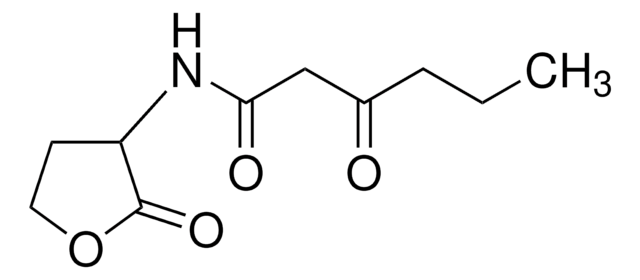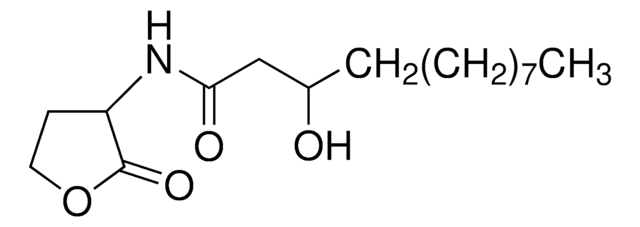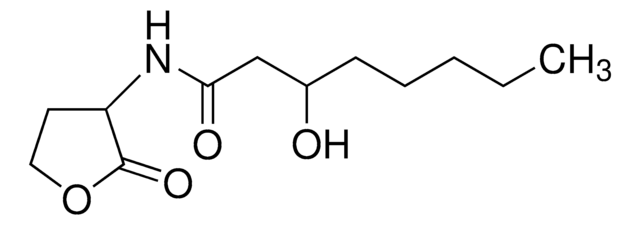Wichtige Dokumente
17248
N-Decanoyl-DL-homoserin-lacton
≥97.0% (HPLC)
Synonym(e):
N-(tetrahydro-2-oxo-3-furanyl)-Decanamide
About This Item
Empfohlene Produkte
Produktbezeichnung
N-Decanoyl-DL-homoserin-lacton, ≥97.0% (HPLC)
Qualitätsniveau
Assay
≥97.0% (HPLC)
Form
powder
Farbe
white
mp (Schmelzpunkt)
111-114 °C
Anwendung(en)
cell analysis
Lagertemp.
2-8°C
SMILES String
CCCCCCCCCC(=O)NC1CCOC1=O
InChI
1S/C14H25NO3/c1-2-3-4-5-6-7-8-9-13(16)15-12-10-11-18-14(12)17/h12H,2-11H2,1H3,(H,15,16)
InChIKey
TZWZKDULKILUPV-UHFFFAOYSA-N
Anwendung
Biochem./physiol. Wirkung
Verpackung
Lagerklassenschlüssel
11 - Combustible Solids
WGK
WGK 3
Flammpunkt (°F)
Not applicable
Flammpunkt (°C)
Not applicable
Persönliche Schutzausrüstung
Eyeshields, Gloves, type N95 (US)
Hier finden Sie alle aktuellen Versionen:
Analysenzertifikate (COA)
Die passende Version wird nicht angezeigt?
Wenn Sie eine bestimmte Version benötigen, können Sie anhand der Lot- oder Chargennummer nach einem spezifischen Zertifikat suchen.
Besitzen Sie dieses Produkt bereits?
In der Dokumentenbibliothek finden Sie die Dokumentation zu den Produkten, die Sie kürzlich erworben haben.
Kunden haben sich ebenfalls angesehen
Unser Team von Wissenschaftlern verfügt über Erfahrung in allen Forschungsbereichen einschließlich Life Science, Materialwissenschaften, chemischer Synthese, Chromatographie, Analytik und vielen mehr..
Setzen Sie sich mit dem technischen Dienst in Verbindung.